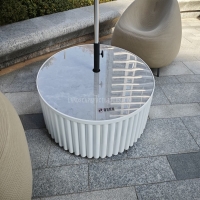Welcome to the website for landscape facilities products and knowledge.
How does the table’s surface affect the usability of pottery or clay modeling activities?
The surface of your table plays a crucial yet often overlooked role in the success and enjoyment of pottery and clay modeling. It directly influences everything from the initial wedging of clay to the final detailing of a piece. A smooth, non-porous surface like sealed wood, laminate, or marble is ideal for most tasks. It prevents the clay from sticking excessively, allows for easy cleanup, and provides a firm, stable base for rolling even coils and slabs with a roller. Conversely, a heavily textured or porous surface can cause clay to stick and tear, making it difficult to achieve smooth finishes and precise forms. The table's stability is equally important; a wobbly surface can ruin delicate structures and make detailed carving frustrating. For hand-building techniques like pinching or coiling, a slightly absorbent surface like canvas can be beneficial, as it pulls a small amount of moisture from the clay, helping it stiffen to a better working consistency. Ultimately, selecting the right table surface is not just about practicality—it's about creating a foundation that supports artistic control, minimizes frustration, and allows creativity to flow unimpeded by technical limitations.
Related search:

Recommendation
Round metal tube border design table with tempered glass or granite countertop on the top.